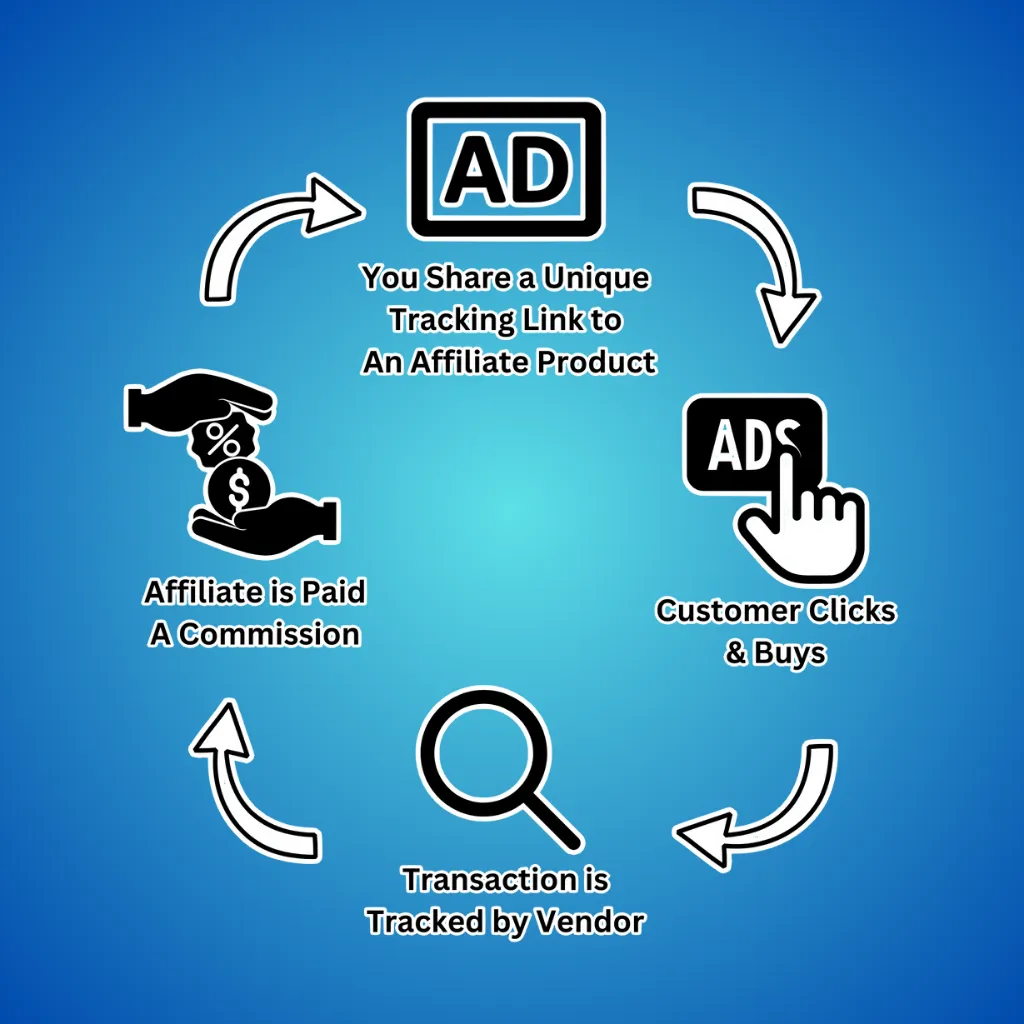In today’s marketing landscape, balancing promotion and authenticity is more crucial than ever. Over-promotion can alienate your audience, while authenticity builds trust and loyalty.
Understanding Affiliate Marketing

Affiliate marketing is a performance-based marketing strategy where individuals or businesses promote products or services of another company in exchange for a commission on sales generated through their referral efforts. This model allows marketers to leverage their audience to earn income while providing valuable recommendations. The success of affiliate marketing relies heavily on the ability to reach potential customers effectively and authentically.
The affiliate marketing ecosystem comprises various participants, including merchants, affiliates, and consumers. Each plays a vital role in the process, with affiliates acting as the bridge between the two. Understanding the dynamics of this landscape is crucial for anyone looking to navigate the challenges in affiliate marketing.
| Role | Description |
|---|---|
| Merchant | The company that provides the product or service. |
| Affiliate | The marketer who promotes the product or service. |
| Consumer | The end user who purchases through the affiliate’s referral. |
The Importance of Promotion and Authenticity
In the realm of affiliate marketing, striking the right balance between promotion and authenticity is essential. Effective promotion can drive traffic and sales, but excessive promotion can lead to skepticism among potential customers. On the other hand, authenticity fosters trust and encourages engagement, which is vital for long-term success.
Marketers face the challenge of ensuring that promotional efforts do not come off as insincere or overly aggressive. Authenticity in marketing means being genuine in communication and ensuring that recommendations align with the audience’s interests and values. When affiliates maintain this balance, they enhance their credibility and improve their chances of converting leads into sales.
To illustrate the impact of authenticity on marketing success, consider the following table showcasing various marketing strategies and their effectiveness:
| Strategy | Promotion Level | Authenticity Level | Audience Trust Level |
|---|---|---|---|
| High Promotion, Low Authenticity | High | Low | Low |
| Moderate Promotion, Moderate Authenticity | Moderate | Moderate | Moderate |
| Low Promotion, High Authenticity | Low | High | High |
By understanding the landscape of affiliate marketing and recognizing the need to balance promotion and authenticity, marketers can better navigate the complexities of their roles. For further insights on common obstacles in this field, visit our article on challenges in affiliate marketing.
Defining Promotion in Affiliate Marketing
Promotion in affiliate marketing refers to the strategies and tactics used to drive traffic to affiliate links, ultimately leading to conversions and sales. This can involve various methods such as content marketing, social media advertising, email campaigns, and search engine optimization (SEO). The goal of promotion is to effectively communicate the value of the products or services being recommended while encouraging potential customers to take action.
Successful promotion requires an understanding of the target audience’s needs and preferences. This ensures that the promotional efforts resonate with them, making it more likely for them to engage with the content and trust the recommendations.
Common Pitfalls of Over-Promotion
While promotion is essential for affiliate marketing success, there are common pitfalls that can arise from excessive promotional efforts. Over-promotion can lead to a negative perception of the marketer and the products being endorsed. Below are some of the most frequent challenges associated with over-promotion:
| Pitfall | Description |
|---|---|
| Loss of Credibility | Overly aggressive promotion can make the audience question the authenticity of the recommendations, leading to a loss of trust. |
| Audience Fatigue | Constantly bombarding the audience with promotional content can cause them to disengage or unsubscribe from communications. |
| Decreased Engagement | Too much promotion may overshadow valuable content, resulting in lower interaction rates and audience interest. |
| Risk of Being Flagged | Excessive promotional content can lead to issues with affiliate programs or platforms, potentially resulting in account suspension or penalties. |
You Might Also Like:
What Authenticity Means in Marketing
Authenticity in marketing refers to the genuine representation of a brand, product, or service. It involves being transparent and honest in communications with the audience. For affiliate marketers, authenticity means promoting products that they genuinely believe in and that align with their values and the interests of their audience. This approach fosters a deeper connection with the audience, as they can sense sincerity in the messages conveyed.
The following table highlights key aspects of authenticity in marketing:
| Aspect | Description |
|---|---|
| Transparency | Being open about partnerships and sponsorships. |
| Honesty | Providing truthful information about products. |
| Alignment | Choosing products that resonate with personal values and audience interests. |
| Consistency | Maintaining a uniform message across all platforms. |
How Authenticity Builds Trust
Authenticity plays a critical role in building trust between affiliate marketers and their audience. When marketers present themselves and their recommendations honestly, it creates a sense of credibility. Audiences are more likely to engage with content that feels genuine, leading to higher conversion rates.
Research shows that consumers are increasingly skeptical of marketing messages. They prefer recommendations from individuals who demonstrate authenticity. The following table illustrates the impact of authenticity on audience trust:
| Trust Factor | Impact on Audience |
|---|---|
| Authentic Messaging | 75% of consumers more likely to trust the brand. |
| Genuine Reviews | 70% of consumers prefer reviews from real users over celebrity endorsements. |
| Long-term Relationships | 60% of consumers more likely to remain loyal to brands they trust. |
By emphasizing authenticity, affiliate marketers can navigate challenges in affiliate marketing effectively. Authentic connections lead to stronger relationships and ultimately support efforts in balancing promotion and authenticity. This balance is crucial for achieving sustainable success. For further insights into challenges faced in this field, refer to our article on challenges in affiliate marketing.
Finding the Middle Ground
To effectively balance promotion and authenticity, marketers must identify the middle ground. This involves understanding the audience’s needs while also fulfilling the promotional goals. A successful strategy requires consistent effort to engage with the audience genuinely while promoting products or services.
| Key Considerations | Description |
|---|---|
| Audience Understanding | Research and understand what the audience values and needs. |
| Transparent Communication | Be clear about affiliations and partnerships. |
| Value-Driven Content | Create content that provides value rather than solely focusing on sales. |
Techniques for Balancing Promotion and Authenticity
Several techniques can aid marketers in striking this balance. Implementing these strategies can enhance the effectiveness of promotional efforts while maintaining a trustworthy image.
Create Value-Added Content: Focus on producing content that educates or entertains the audience. This could be in the form of tutorials, reviews, or informative articles. Authenticity shines through when content genuinely benefits the audience.
Use Personal Experiences: Sharing personal stories or experiences related to the products can enhance authenticity. When readers see real-life applications and testimonials, they are more likely to trust the recommendations.
Engage Regularly with the Audience: Building a community around the brand can foster trust. Responding to comments and engaging in conversations can demonstrate a commitment to the audience’s interests.
Be Selective with Promotions: Instead of promoting every product available, choose only those that align with personal values and resonate with the audience. Quality over quantity is crucial.
Disclose Partnerships: Being transparent about affiliate relationships is vital. Clearly stating when content includes affiliate links can maintain integrity and enhance trust.
These techniques can create a harmonious approach to marketing that resonates with audiences while achieving promotional objectives.
Creating Genuine Content
Genuine content resonates with audiences and builds credibility. It is crucial for affiliate marketers to focus on producing high-quality, relevant material that aligns with their audience’s interests and needs. Authenticity in content helps to establish a connection and fosters trust.
| Content Type | Description | Benefits |
|---|---|---|
| Blog Posts | Informative articles that provide value to readers | Establishes authority |
| Videos | Engaging visual content that demonstrates products | Increases viewer engagement |
| Social Media Posts | Short, relatable updates that connect with followers | Enhances community feel |
| Reviews | Honest evaluations of products or services | Builds trust and reliability |
Marketers should prioritize transparency in their content by clearly disclosing affiliate relationships. This approach ensures that the audience understands the nature of the recommendations made.
Engaging with the Audience
Engagement is a crucial component of effective marketing. By actively interacting with their audience, affiliate marketers can foster a sense of community and encourage loyalty. Various methods can enhance audience engagement:
- Responding to Comments: Acknowledging feedback and questions helps build rapport.
- Conducting Polls and Surveys: This allows marketers to gather insights and understand audience preferences.
- Hosting Live Q&A Sessions: Offering real-time interaction can strengthen connections and showcase authenticity.
- Creating Interactive Content: Quizzes and contests encourage participation and make the experience more enjoyable.
| Engagement Method | Description | Expected Outcome |
|---|---|---|
| Social Media Interaction | Regularly engaging with followers | Strengthened community ties |
| Email Newsletters | Sending updates and personalized content | Enhanced loyalty |
| Webinars | Educational sessions on relevant topics | Increased trust |
For additional strategies to tackle challenges, explore our articles on fraudulent activities and how to prevent them, navigating competitive niches, and staying updated with industry changes.
Measuring success is crucial for understanding the effectiveness of strategies, especially when it comes to balancing promotion and authenticity. Marketers must identify specific metrics to evaluate their performance and audience engagement.
Key Performance Indicators (KPIs)
Key Performance Indicators (KPIs) serve as measurable values that demonstrate how effectively an affiliate marketer is achieving their objectives. Some of the essential KPIs in affiliate marketing include:
| KPI | Description |
|---|---|
| Conversion Rate | The percentage of visitors who complete a desired action, such as making a purchase. |
| Click-Through Rate (CTR) | The ratio of users who click on a specific link compared to the total number of users who view the page. |
| Return on Investment (ROI) | A measure of the profitability of the marketing efforts, calculated as (Net Profit / Cost of Investment) x 100. |
| Engagement Rate | The level of interaction (likes, shares, comments) that content receives from the audience. |
These KPIs help marketers understand which strategies are effective and where adjustments are necessary.
Assessing Audience Response and Trust
Understanding audience response is key to maintaining a successful affiliate marketing strategy. Marketers should consider both qualitative and quantitative methods to gauge how their audience perceives their promotions.
Qualitative Methods:
- Surveys: Conducting surveys can provide direct feedback from the audience about their experiences and perceptions.
- Social Media Monitoring: Observing comments and interactions on social media can reveal audience sentiments towards promotional content.
Quantitative Methods:
- Analytics Tools: Using analytics tools to track user behavior can provide insights into how audiences engage with content. Metrics such as bounce rates and session duration can indicate trust levels.
- Trust Scores: Platforms and tools may offer trust scores based on audience feedback and engagement metrics, which can help assess the authenticity of the marketing efforts.
| Assessment Method | Purpose |
|---|---|
| Surveys | Gather direct feedback from the audience about their perceptions. |
| Analytics Tools | Monitor user behavior and engagement metrics. |
| Social Media Monitoring | Analyze audience sentiment through comments and interactions. |
| Trust Scores | Evaluate the overall trustworthiness based on audience engagement. |
By effectively measuring success through KPIs and assessing audience response, marketers can fine-tune their approach to achieve a harmonious balance between promotion and authenticity.
You Might Also Like:
Why is balancing promotion and authenticity important in marketing?
Balancing promotion and authenticity is crucial because it helps build trust and loyalty with your audience while avoiding the pitfalls of over-promotion, which can alienate potential customers.
What are the risks of over-promotion?
Over-promotion can lead to loss of credibility, audience fatigue, decreased engagement, and potential penalties from affiliate programs or platforms.
How can marketers maintain authenticity in their campaigns?
Marketers can maintain authenticity by being transparent, honest, aligning with their audience’s values, and choosing products that resonate with both their personal beliefs and audience interests.
What strategies can help balance promotion and authenticity?
Strategies include creating value-added content, sharing personal experiences, engaging regularly with the audience, being selective with promotions, and disclosing partnerships.
How can success be measured when balancing promotion and authenticity?
Success can be measured through KPIs such as conversion rates, click-through rates, ROI, and engagement rates, along with assessing audience response and trust through qualitative and quantitative methods.











